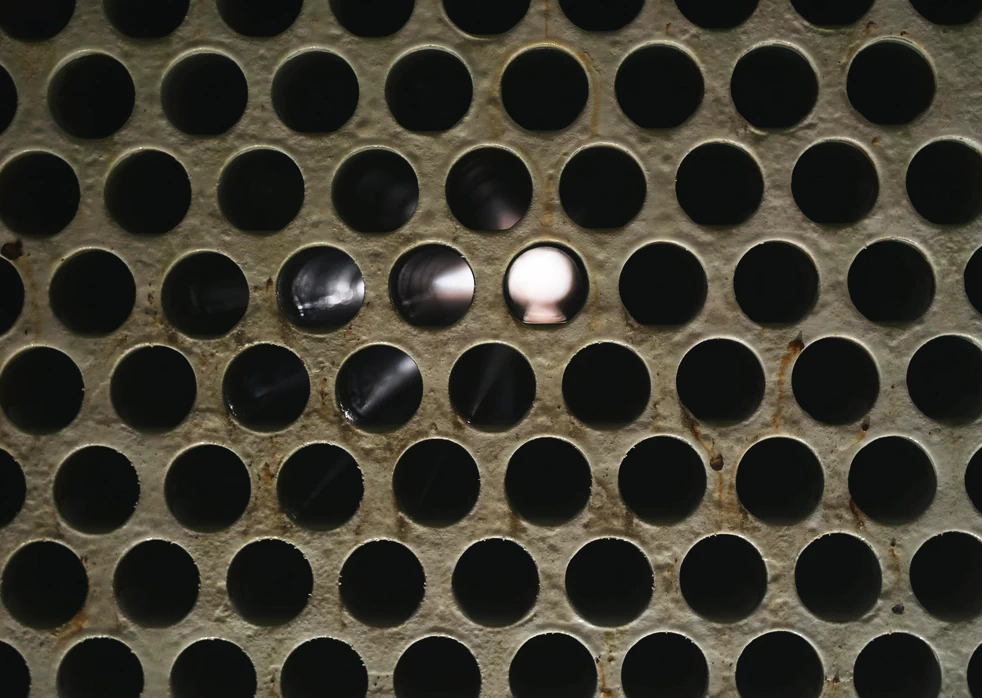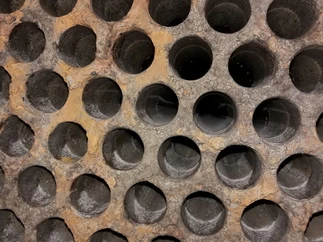operational problems of turbine condensers
During the operation of turbine condensers, water deposits and corrosion products are released on the inner surfaces of condenser tubes. The main components of the deposits are mostly:
- carbonates
- alkaline carbonates
- silicates and sulfates of metals such as calcium, magnesium, iron, copper and zinc
This problem is particularly exacerbated in open-circuit cooling systems fed by river water. Water quality changes depending on the season and weather conditions. Due to the nature of the source, significant amounts of river silt, sand, fine wood and organic particles are carried into the condensers. These contaminants, deposited on the screen bottoms of the condensers, can cause restriction of water flow in the tubes. This worsens the heat exchange, and the increase in temperature promotes the loss of carbonate deposits and the decomposition of organic compounds into nitrates, nitrites, ammonia, sulfides, etc.
The thickness of the sediments can vary from one to several millimeters Analyses of the structures of individual sediment layers indicate that the process of their formation is very different and non-uniform, which is due to the periodic occurrence of significant amounts of suspended solids.
In order to ensure proper and optimal operation of the equipment, it is necessary to maintain a high level of cleanliness of the internal surface of condenser tubes, both because of the need to ensure good heat transfer and because of the reduction of the intensity of corrosion processes (sub-sedimentary, selective and other corrosion). It is therefore necessary to periodically operate and overhaul the tubes using methods appropriate to the type of sediment, tube material and exchanger design.

